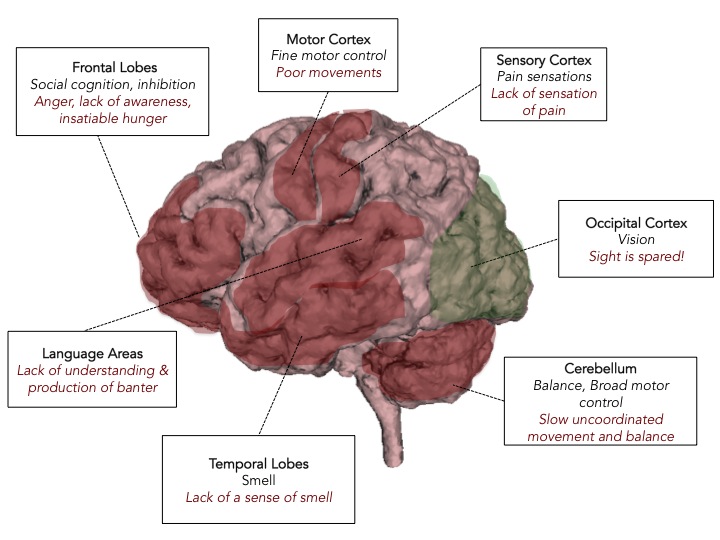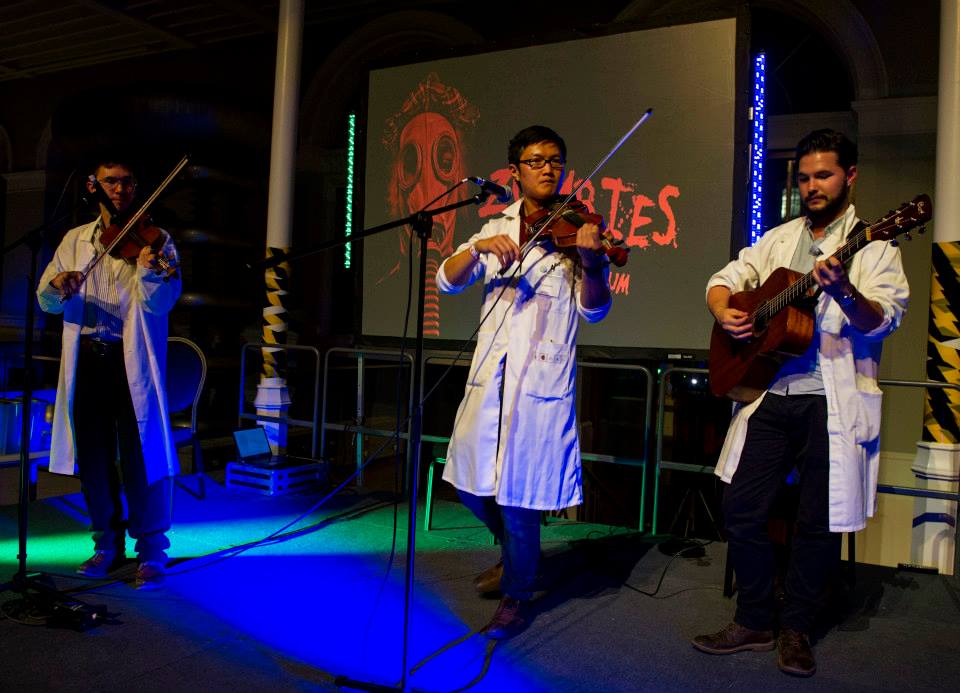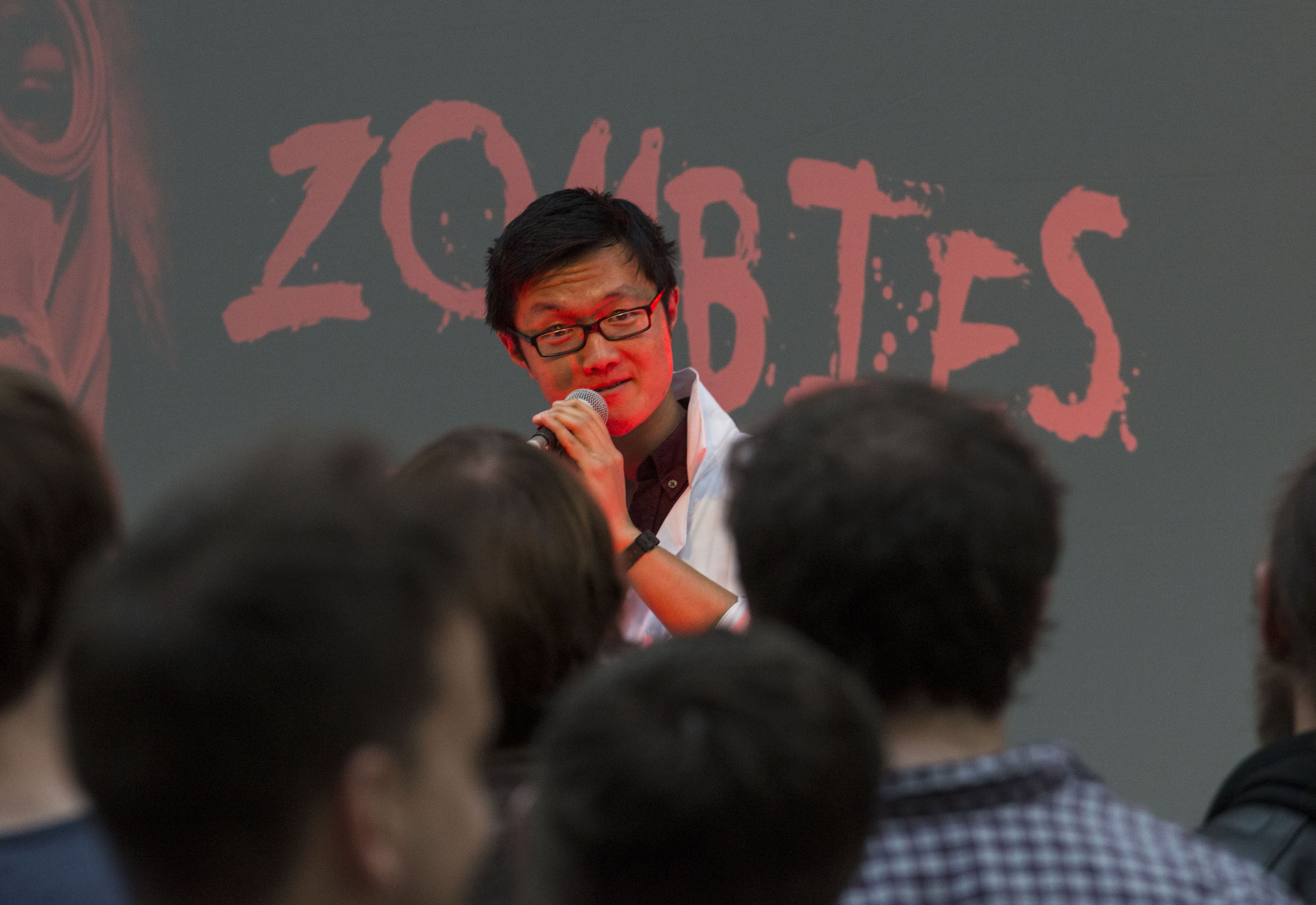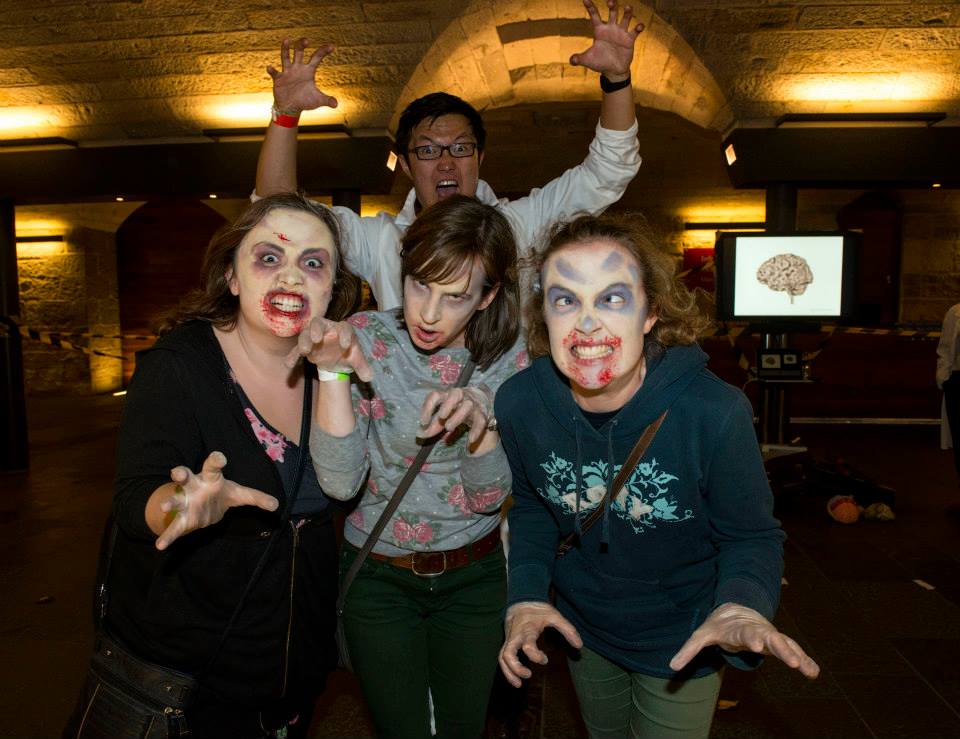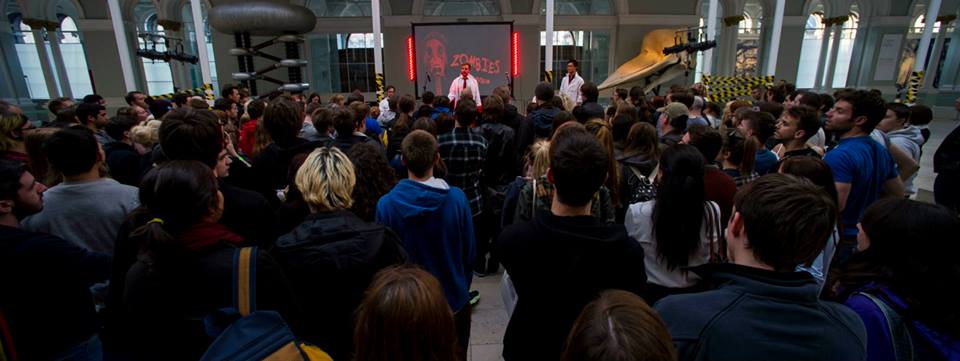Some of my work in neuroscience takes me to strange places, including consulting on the "Zombie" infected brains.
I survived the Deadinburgh outbreak in Edinburgh, April 2013, collaborating with the LASTheatre immerse theatre group (a project which then went on to win the NCCPE STEM Public Engagement award in 2014 - see here for the case-study)
And have since been working on multiple outbreaks since, including Zombies in the National Museum of Scotland (August 2014).
Some basic components of the zombie brains is as follows
More results and science to come, pending replication and write up, though it's not easy getting the infected into MRI machines....
The disease mechanisms and pathology seems to be different depending on outbreak. For the latest outbreak (August 2014), these are our findings, leading to:
Rule 1: NOT Cardio. Zombies are highly sensitive to fast movements, relying very heavily (perhaps exclusively) on their sense of sight. Slow movements are less likely to trigger their attention, and staying still is one way of avoiding them.
Rule 2: Stay away: at this stage, we do not understand the mechanism of infection but we know bites, and other infectious bodily fluids are involved. .
A (rough) draft video of my Deadinburgh talk is below.
*Disclaimer: Zombies may not exist though I do find zombies have been a wonderful, tongue-in-cheek way of explaining neuroanatomy to the public. They are an interesting platform to discuss the general principles involved in diseases as well as the emergent ethical issues that come from it!

